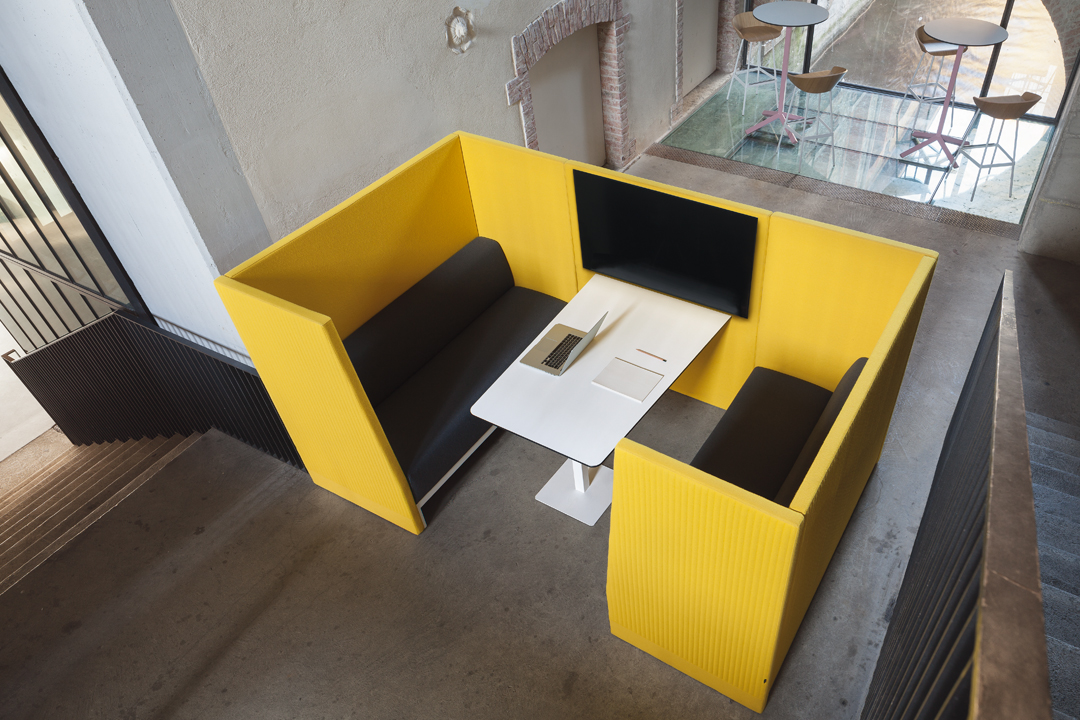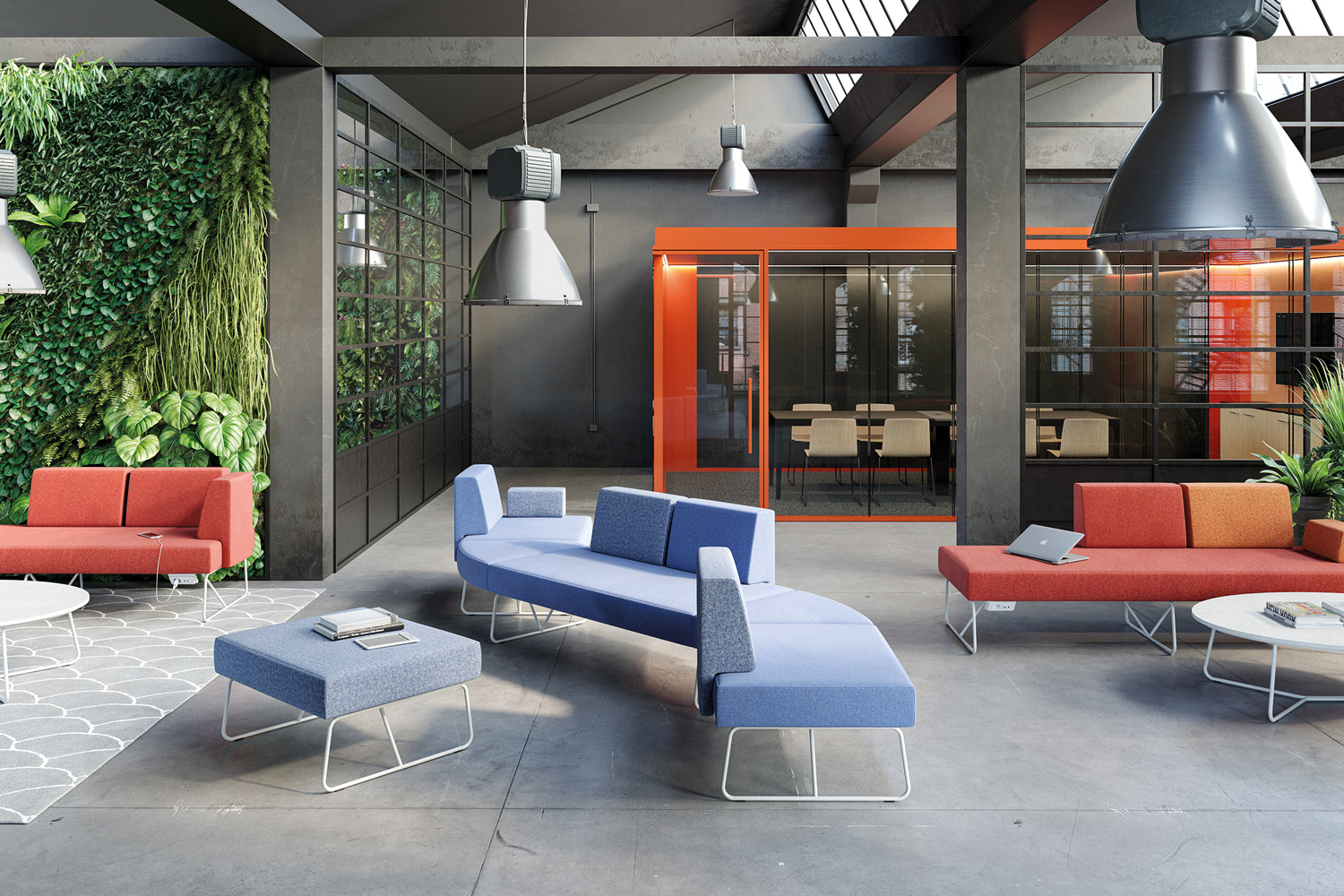More than a year has passed since the Covid-19 emergency began and several global studies are questioning the office evolution, the changing working habits and the consequences of digital transformation processes.
Is this the end of open spaces? Will we all have to have a home office, even though space in it is becoming increasingly limited?
We’ve already talked about adaptability, the ability to evolve, security and comfort (in this article from June 2020); these issues remain relevant and are beginning to take shape in concrete terms.
Remote, in-presence and hybrid work: an evolving balance
Some people have been back in the office for months and others have not yet managed to do so, but the most common question they all seem to have is: how will remote working shape our future?
The digital workplace has rewritten the space-time coordinates of work, making employees more productive and responsible: in the future, will we work only in a virtual world or will we slowly return to the habits of the past?
“Est modus in rebus” affirmed the Latin poet Horace. In other words: there is a measure in all things.
It’s preferable to look for balance, a precious middle way that can satisfy everyone.
New safe formulas must be devised to make the most of the potential of offices which, at the moment, aren’t used that much due to the health emergency.
The concept of hybrid work seems to take its cue from this philosophy, proposing periods, of varying length, divided between face-to-face and remote work.
For a number of companies, the coexistence of in-office and remote work is becoming the new normal, making hybrid work a new way of working.
The company’s physical space is thus transformed into a ‘transitional office’, where people come in rotation (according to a shared calendar) to allow everyone to have their own space in total security.
It can be assumed that only those who have a specific need will go to the office, while the other part of the workforce will interact from home. The digital connection and document sharing with the “remote working” team will be an indispensable element for business continuity.
More and more platforms are now offering softwares to support companies in digitising and approaching this ‘new normal’. They include functions that allow, for example, to book offices and desks, to efficiently trace contacts or to plan spaces in relation to people density in order to ensure physical separation. This will encourage a dynamic office allocation which will increase the percentage of people using it.

“Future-proof” office
Journalist John Seabrook, in an in-depth article published in The New Yorker, closely followed a number of large US companies together with the architectural firms they’ve hired to transform their offices in preparation for the return of employees.
The key points, common to the various interviewees, seem to be the same. Here are the main ones:
- “Health” areas – Temperature checkpoints will be placed at the entrance to the companies (already in place where work has returned to “normal”) and there will be a totem with hand sanitising gel in each office.
- Touchless elements – Wherever possible, points of contact with surfaces will be eliminated. We are therefore talking, for example, about automatic doors, movement activated towels and small voice-controlled appliances.
- Hot desks – In larger offices, desks will not be assigned, but booked through online platforms. Desks will be positioned in a ‘pinwheel’ formation, with partitioned screens on two sides, to allow greater privacy without losing the open office potential.

Desks: pinwheel formation
- Working lounges – Common areas will become a place for creative interaction. Equipped with sofas, armchairs, chairs, tables and smart furniture, they will allow people to focus on their work away from their desks, and encourage collaboration between colleagues.
- Focus pods – The classic “booths”, closed on three sides, will become an increasingly present place of exchange, where people can meet for informal meetings. A space specifically designed to stimulate discussion and interaction between individuals.
- Meeting rooms – They will have to be designed with hybrid teams in mind (remote and presence) and equipped with large screens, connectivity systems and next-generation audio.
- Individual rooms – These will be reserved only for functions that require constant privacy, such as the CEO’s office or HR managers.
What can we deduce from this?
The office of the future, also through the physical and social interactions of employees, will remain a source of inspiration, a nerve centre for discussion and development, and will continue to be a strong signal of prestige, branding and trust with stakeholders.
However, it will change with regard to the organisation and distribution aspect of spaces: we’ll find fewer desks but more common, flexible and technological areas, with open fluid spaces, and alternating work and relaxation areas.
The layout will remain the one of an open space, but the large groups of people will be divided into small teams. The aim will be to reduce the number of people in each working group and avoid clusters. People will be given back the privacy and space that the traditional open office system had ‘stolen’ from them. The future is getting closer!

